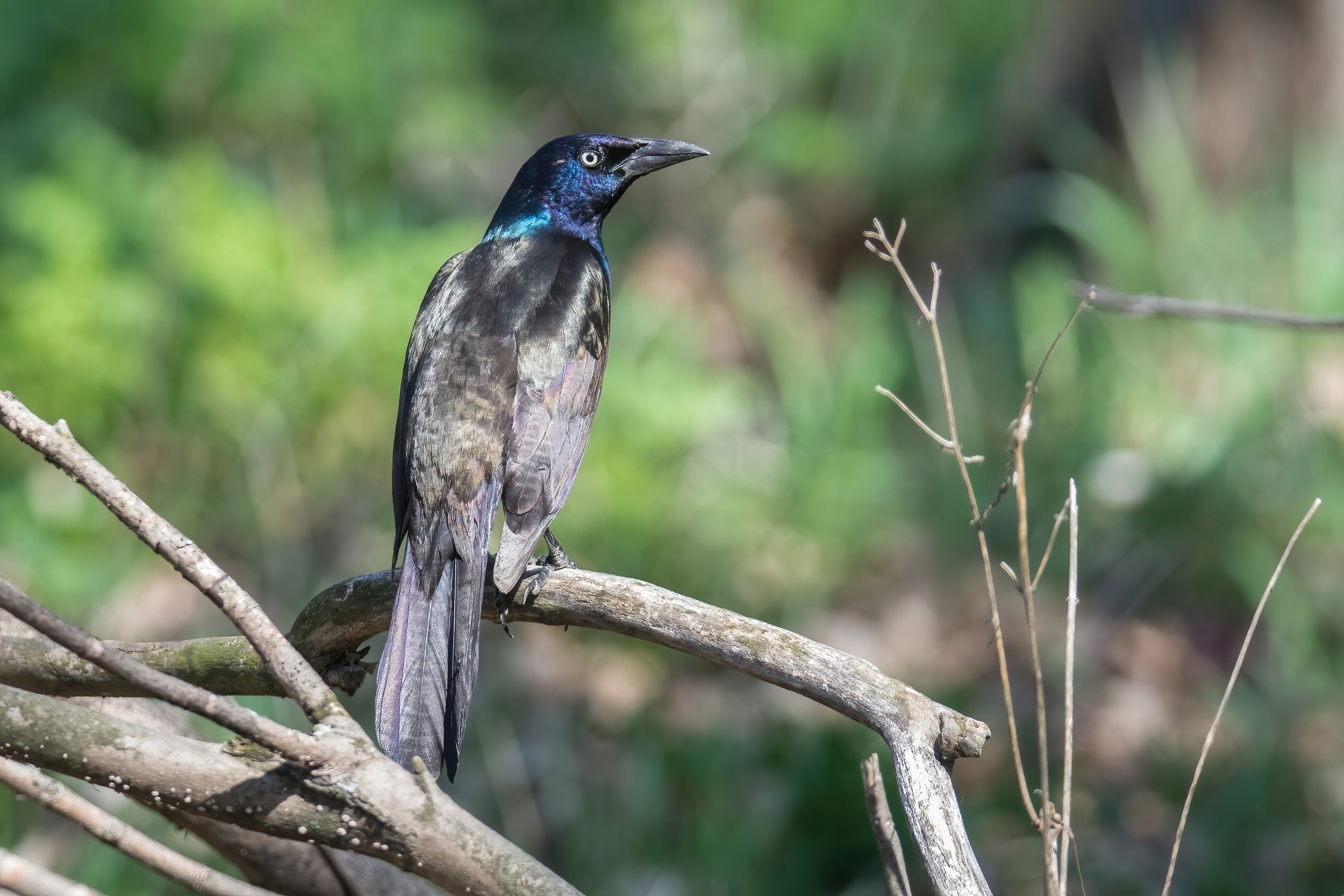Dan's Feathursday Feature: Common Grackle
Thinking of Grandpa and Grackles this Thanksgiving
When he was young, my grandfather worked as a rivet passer at the ship works in Detroit, eventually retiring from Great Lakes Steel in the mid-sixties. The life of a steelworker was a hard one, and his only sources of enjoyment were his hunting cabin in the winter, where we spent many happy Thanksgivings, and his large garden in the summer.
What's this got to do with the Common Grackle? Well, for this man who had scraped through the Great Depression and the Second World War, the Grackle was nothing more than a pest bent on stealing his vegetables. It was also an edible pest, and I remember many times finding the roasting pan in the oven with a half dozen "tiny chickens" steaming under a cover of rosemary.
The Common Grackle does little to endear itself to other birds, either, regularly raiding their nests for the eggs or the chicks, or even sometimes the adult bird. If birds made movies, the Grackle would no doubt be cast as the villain.
But enough with the dissing. While not the definition of cute, the Common Grackle is an impressive bird, larger and longer-tailed than other blackbirds. The male, with its iridescent blue head and nape and its piercing golden eyes, is an imposing, almost menacing presence. And here is a cool evolutionary tidbit. The upper mandible of the Common Grackle has a serrated edge that it uses to saw open acorns. I've never seen one do this, but I'll be looking!
To this day, when I see a Common Grackle I can't help but think of my grandfather's makeshift trap in the garden and his roasting pan filled with miniature turkeys. And I whisper to the Grackle: "You can be thankful times have changed."
Dan's Feathursday Feature is a regular contribution to the COS blog featuring the thoughts, insights and photography of Chicago birder, Dan Lory on birds of the Chicago region.






